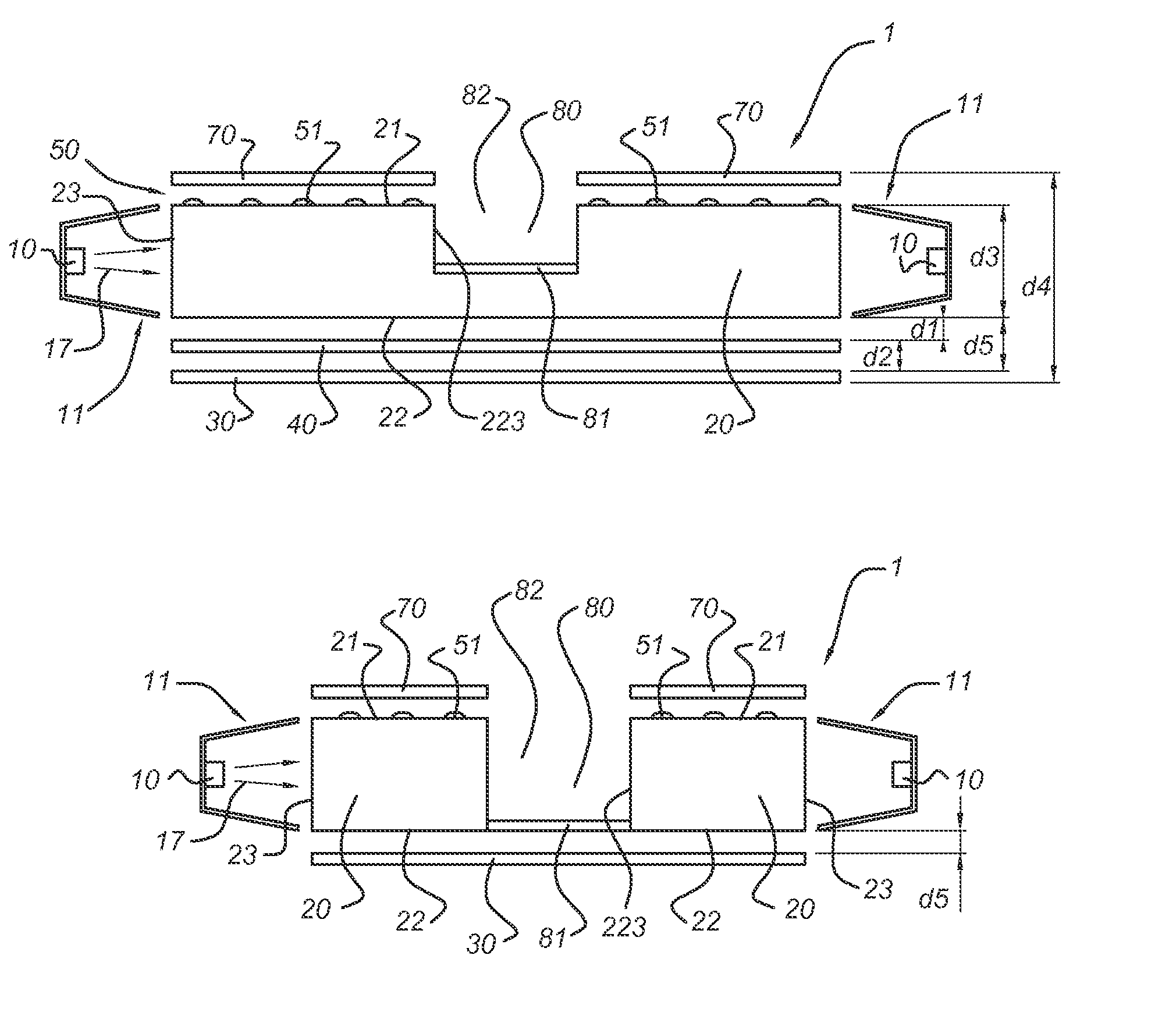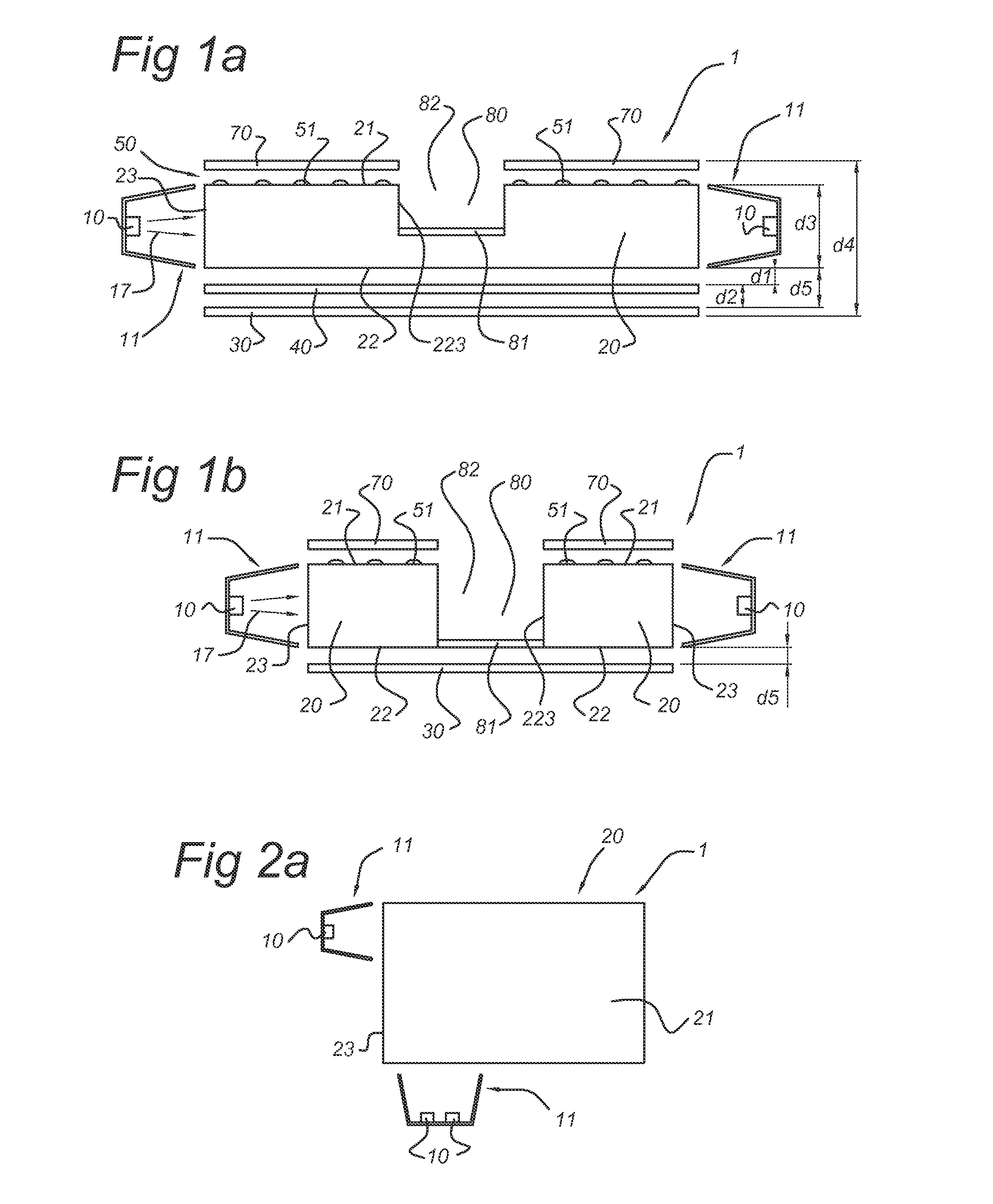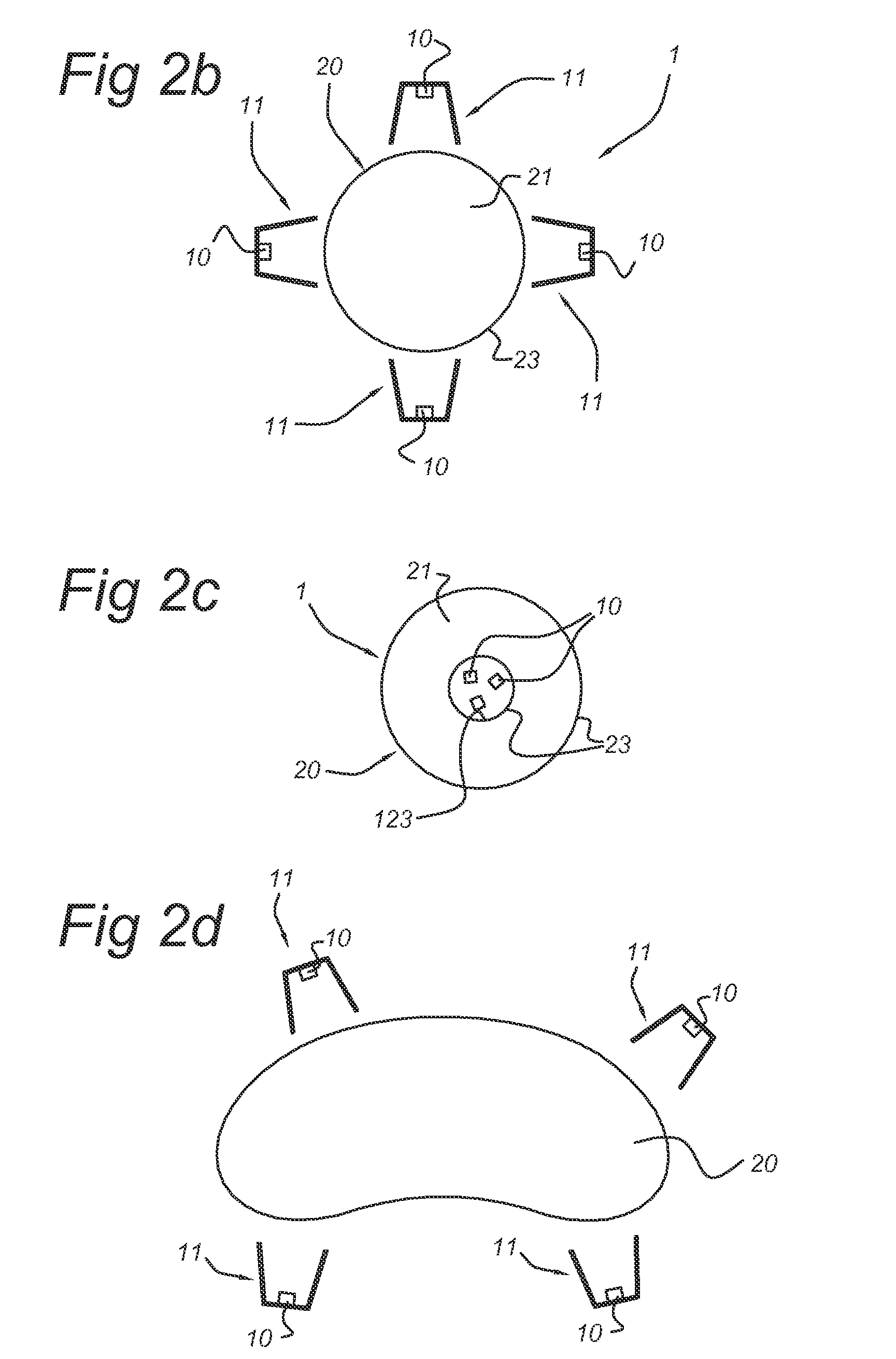Free form lighting module
a technology of free form lighting and modules, applied in the direction of fixed installations, lighting and heating apparatus, instruments, etc., can solve the problem that prior art systems may not have the ability to provide light to both sides of a flat waveguid
- Summary
- Abstract
- Description
- Claims
- Application Information
AI Technical Summary
Benefits of technology
Problems solved by technology
Method used
Image
Examples
Embodiment Construction
[0049]FIG. 1a schematically depicts an illumination device 1 according to an embodiment of the invention. The illumination device 1 comprises a waveguide element 20. This waveguide element 20 comprises a first face 21, which is also indicated as top face, and a second face, indicated with reference 22, which is also indicated as bottom face. The edge is indicated with reference 23. The waveguide 20 may be made of any material known in the art, such as transplant plastics, glass, etc. At the edge of the waveguide, a light source 10, especially a LED, is arranged, which is arranged to provide light 17, also indicated as LED light 17, for incoupling into the waveguide 20 via edge 23. Optionally, collimator optics 11 may be present, arranged to collimate, at least part of the LED light 17, into the edge 23 of the waveguide 20. The light that enters the waveguide 20 via edge 23 will travel through the waveguide 20 and may reach top face 21.
[0050]Top face 21 comprises structures 51, which...
PUM
 Login to View More
Login to View More Abstract
Description
Claims
Application Information
 Login to View More
Login to View More - R&D
- Intellectual Property
- Life Sciences
- Materials
- Tech Scout
- Unparalleled Data Quality
- Higher Quality Content
- 60% Fewer Hallucinations
Browse by: Latest US Patents, China's latest patents, Technical Efficacy Thesaurus, Application Domain, Technology Topic, Popular Technical Reports.
© 2025 PatSnap. All rights reserved.Legal|Privacy policy|Modern Slavery Act Transparency Statement|Sitemap|About US| Contact US: help@patsnap.com



